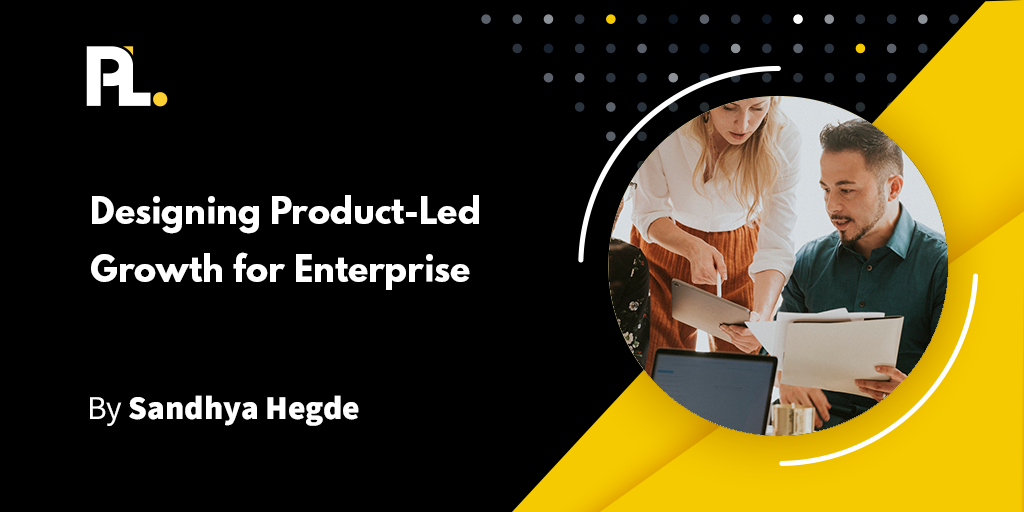
Sales-led growth (or SLG) is a strategic approach that places sales activities at the forefront of driving business growth.
In contrast to product-led growth (PLG), where the product is the primary growth driver, SLG relies heavily on the efforts of the sales team to generate revenue.
In a traditional sales-led model, potential customers engage with the sales team before they can access or try out the product or service.
Every department in a sales-led business is organized around selling the product. The teams, including Sales, Marketing, and Customer Success, work together to drive business growth, with Sales taking the lead in finding prospects and demonstrating the value of the product to convince them to buy.
Companies embracing a sales-led growth strategy often offer complex products or services that require in-depth understanding and hands-on guidance from sales experts.
Product-Led vs Sales-Led
When you’re a startup or a founder seeking to rejuvenate your company’s growth strategy, you have two distinct approaches to consider: product-led and sales-led strategies.
While each approach has its merits, understanding their fundamental differences can empower you to determine an approach that best suits your business.
What is Product-Led Growth?
Product-led growth is a strategy that focuses on leveraging the product itself to drive growth.
With this approach, product features and customer experience become the primary drivers of growth. Instead of relying solely on sales teams, prospects can try out the product on their own, often through a free trial or freemium model.
What Sales-Led Growth?
On the other hand, sales-led growth is a strategy where growth is primarily driven by the sales team.
In this approach, potential customers need to reach out to the sales team and engage in a conversation before they can try out your product. The emphasis is on investing in sales teams, processes, and tools to acquire new customers.
Some Key Differences Between SLG and PLG
- Customer Acquisition: In sales-led growth, the sales team plays a crucial role in acquiring new customers. In contrast, product-led growth allows potential customers to experience the product firsthand, reducing the reliance on sales efforts for customer acquisition.
- Emphasis on Product: Unlike the sales-led approach, PLG puts a strong emphasis on product development and customer experience. By offering a self-serve experience, the product becomes the main driver of growth, as users can explore its features and benefits without the need for direct sales interactions.
- Success Metrics: In a sales-led growth model, different teams may track various success metrics, such as revenue generated or deals closed. In contrast, in a product-led growth model, every department tracks the same success metrics, aligning their efforts toward the product's success.
Continue exploring the differences in our Product-Led Growth Vs Sales-Led Growth blog.
Is SLG or PLG Better?
When it comes to choosing the right go-to-market strategy for your business, there are a few factors to consider.
Sales-led growth can be effective in industries where a high-touch sales approach is necessary, such as complex enterprise solutions. It allows for personalized interactions and tailored solutions to meet specific customer needs. However, a sales-led approach can also be resource-intensive, requiring significant investments in sales teams and processes.
On the other hand, there are several benefits of product-led growth.
By focusing on the product and providing a frictionless user experience, PLG allows for self-serve onboarding and faster time-to-value. This approach can lead to viral adoption, as satisfied users become advocates and refer family and friends to the product. Additionally, product-led growth can help reduce customer acquisition costs and increase customer lifetime value.
Ultimately, the choice between sales-led and product-led growth depends on your target market, product complexity, and resources.
Evaluate the preferences and needs of your customers, as well as your company's capabilities and goals.
Hybrid Product-Led Sales Approach
In the world of B2B SaaS growth, sales-led growth and product-led growth are two main strategy camps to choose from. However, there is also a third option that combines the best of both worlds - product-led sales.
The hybrid approach involves investing in both product-led and sales-led strategies, allowing businesses to leverage the strengths of each approach. This means that while the product remains the primary driver of growth, sales efforts are also utilized to accelerate customer acquisition and drive revenue.
By adopting a hybrid approach, companies can benefit from the self-serve nature of a product-led strategy, which allows users to experience the value of the product before making a purchase decision. This can lead to higher conversion rates and lower customer acquisition costs.
At the same time, the sales-led component of the hybrid approach enables companies to target larger enterprise customers who may require a more personalized sales process. Sales teams can engage with these prospects, provide demos, and address any specific needs or concerns they may have.
By combining these two strategies, some SaaS companies can create a powerful growth engine that caters to a range of customers and maximizes revenue potential.
Transitioning from Sales-Led Growth to Product-Led Growth
When your company is transitioning from SLG to PLG, careful planning is required. The process involves several key elements, team alignment, and a willingness to adapt and learn from failures to achieve successful growth through a product-led approach.
Here are a few tips for making the SLG to PLG transition:
- Implement a strategy to identify the right time for sales involvement and allocate resources effectively. Involve sales based on customer type and potential impact on margins.
- Adapt priorities, and metrics, and influence the product experience accordingly. As you transition to PLG, marketing's role expands to encompass driving user adoption, engagement, and revenue growth within a product-led context.
- Recognize failed strategies and pivot accordingly. Ensure that your allocation of resources and incentives aligns with valuable opportunities.
- Product-market fit is a prerequisite for PLG. Achieving product-market fit provides valuable feedback and insights, making it easier to establish a scalable PLG strategy.
- Develop a broader customer engagement strategy to determine when human engagement is necessary. Recognize that customers view your company as a single entity, regardless of self-serve or sales-led interactions.
For more, read “How to Create a Product-Led Movement Inside Your Sales-Led Company,” and learn how Jebbit found success despite setbacks and failures on its journey to PLG.
Recap on Sales-Led Growth
The sales-led growth strategy places sales activities at the forefront of business growth, relying on the sales team to generate revenue. It's a model suited for complex products or services that require personalized guidance. However, the choice between SLG and product-led growth depends on factors like your target market, product complexity, and available resources.
The transition from SLG to PLG is a significant shift that involves rethinking metrics, data modeling, and customer communication. It also requires a focus on achieving product-market fit before implementing a PLG strategy. Companies may benefit from a hybrid approach that combines the strengths of both strategies.
Ultimately, the right growth strategy depends on your unique SaaS business goals and customer preferences, but understanding the differences between SLG and PLG can help you make an informed decision to drive your business forward.
Continue to expand your product-led knowledge and drive the growth of your SaaS company by leveraging the valuable insights from the bestselling book, “Product-Led Growth: How to Build a Product That Sells Itself.”
Alternatively, if you’d like to work with a coach to implement these components into your business, check out ProductLed MBA. It’s our intensive coaching program where we’ll help you build a strong foundation for product-led growth so that you can scale faster and with more control.
What’s unique about this program is we’ll work with you and your team to implement the proven ProductLed Method so that you can scale faster with less stress. We’ll go through everything we went through today with your team to ensure everyone is working on building out solutions that will have an outsized impact.
If you’re ready to take the first step, complete your PLG readiness assessment to see exactly where your business stands. Then, explore your implementation options by scheduling a strategy session.






















